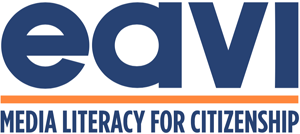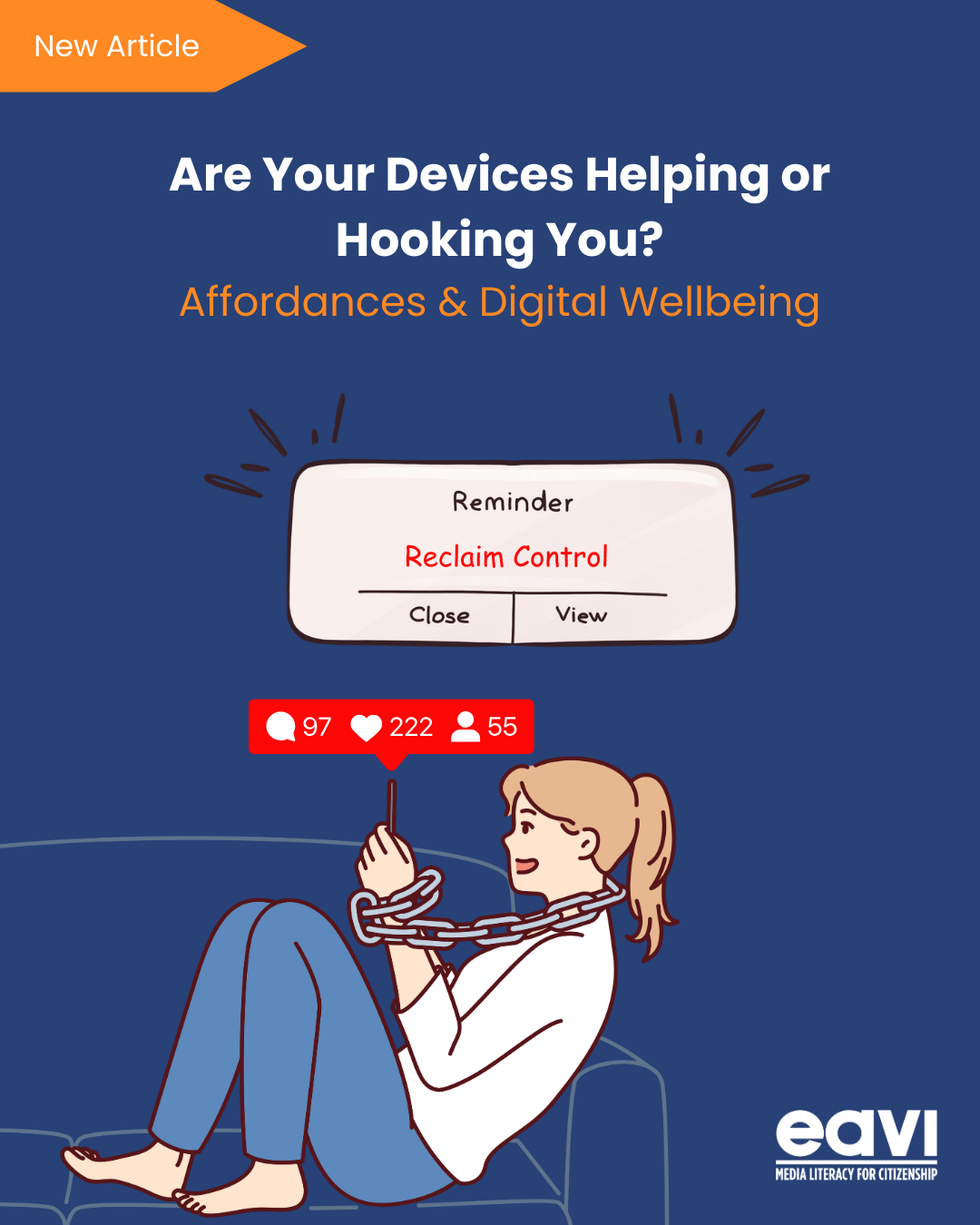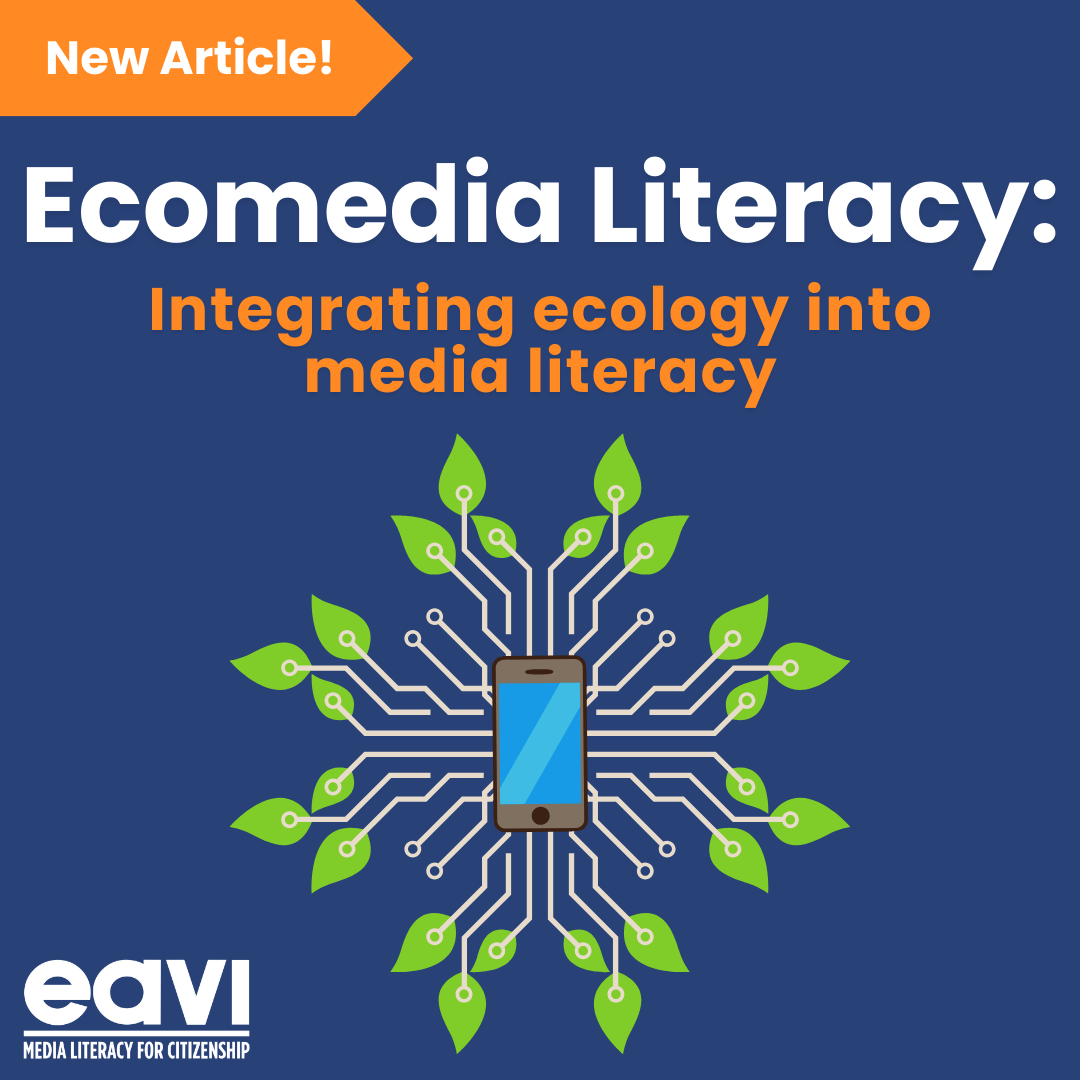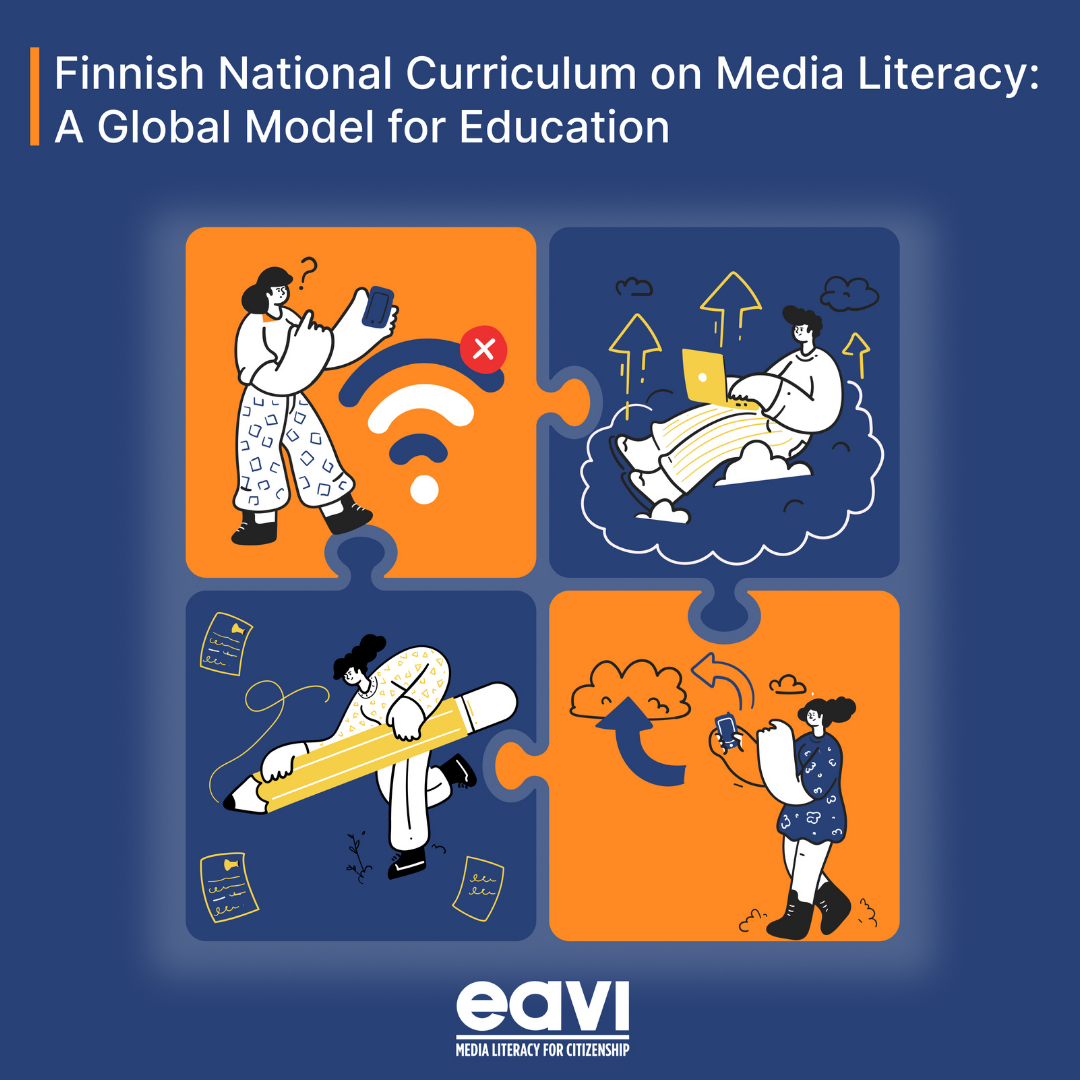Conclusions drawn from the discussion with Claire Wardle – 16th of November (EAVI Conversations 2021)
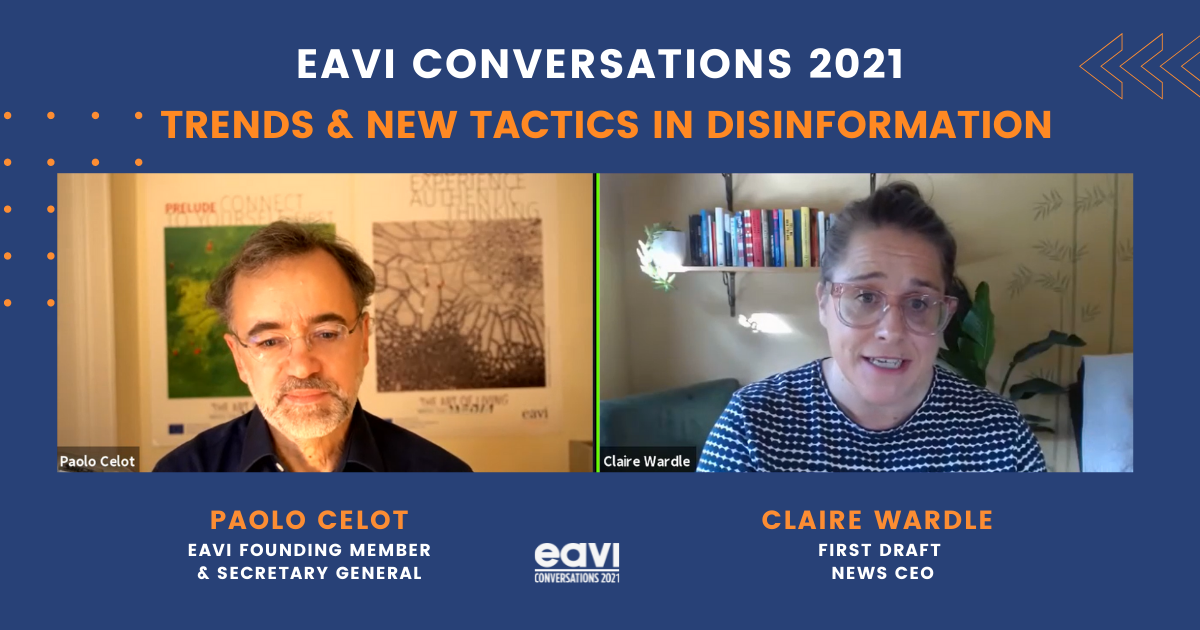
If you were to hear bits and pieces of Claire Wardle’s session and come across her statement that disinformation is not an issue anymore, you could be bewildered. After all, is it not something we should all be concerned about?
It definitely is, but the object of this worry shouldn’t be disinformation per se, in the sense of deliberately false or harmful content. Platforms have been increasing controls and improving their policies and rules, therefore deceitful, fraudulent, and violent content is mainly taken down. If not, people are more and more aware of how to recognise and deal with it.
Given the above, trends and tactics of false information have evolved, overcoming the barriers of platforms’ rules, and recurring to incorrect or misleading content labelled as misinformation. Although it might seem less threatening than disinformation, the challenge it represents is nevertheless bigger. This is indeed more difficult to spot, being a low level and conspiratory content breaking neither platforms’ guidelines nor freedom of expression ones. In a nutshell, it is legal.
Due to its low profile, misinformation goes unseen and can cause disturbances without being blamed, given its subtle nature. Misinformation attacks are constant but invisible, and over a long period of time, they might have a huge impact on our democracies, more so because they don’t have any boundaries. As a result, citizens have no confidence in politics, they do not believe in climate change, they are sceptic about COVID-19 vaccines, and they have no trust in each other. The danger is the constant drop of falsehood feeding individuals, which has an impact on trust within the political and societal systems. An example could be Donald Trump’s criticism of democracy started in 2015 and stopped only in 2021 when, after the Capitol Riot in the US, Twitter banned him. Clearly, until that moment, the leakage had already done its damage.
Contrarily to what is being said by other experts, Claire doesn’t think politicians are the solution to this information disorder, as they are part of the problem, and they have a lot to gain or lose from this phenomenon. Thanks to social media, politicians have developed their own communication systems and are in direct contact with users, therefore it rarely matters what mainstream media say, messages and misleading content are channelled directly to potential voters without any mediation. Moreover, polarization has thrived in an already complex media environment. Additionally, most of the time policy is not up to speed with new tactics, and it might not be effective to counteract the problem. The real solution is the involvement of researchers, ethics, psychologists, sociologists, and everybody who understands how misinformation tricks our brain and emotions. More transparency is needed, rather than problematic regulation which might have unintended consequences.
However, as Claire affirms, misinformation is not about platforms or regulation, but it is mainly about people. When it comes to individuals, tactics mainly concern emotions and feelings. Unfortunately, the solutions already in place today try to tackle the issue through rational responses, disregarding the emotional ones. Fact-checkers and researchers cannot help much because facts are irrelevant when a piece of news touches our inner chords. Luckily for the platforms, they understood that feelings are the drivers, and they built their empires on this.
Conspiracy theories are a hidden type of ”pollution”, for our environment, whether online or offline. As an example, are really powerful because they address people’s insecurities offering them certainties, in opposition to truthful information or data which might result in ambiguity. Often the information disorder exploits data deficit to flourish: in crucial periods (let’s think about the pandemic) important questions are raised, which seldomly get answered. This is the perfect environment for conspiracy theories to thrive, as they offer clear and simple answers to people’s doubts. What can the solution be in this case? Claire is certain media experts, researchers, journalists, etc. should concentrate more on the information supply chain and intervene earlier in this process so as to feed the chain with qualitative and truthful information.
Another distinctive trait of the misinformation ecosystem is its participatory approach. The #StopTheSteal movement encouraged supporters to share their views about elections and in this way, people felt heard and part of a community. On the contrary, this doesn’t happen with a truthful information ecosystem which is still top-down, hierarchical, and overall, really passive. It still relies on a broadcast way to communicate with its audience, without updating practices and processes. In an attempt to take what works when it comes to misleading content, we should make traditional media more inclusive, find information ambassadors and invest in communities/networks of people, before it is too late, and everybody has moved away from traditional media.
In view of the future, it is important not to avoid the conversation about misinformation’s impact with people fooled by it; it is instead crucial to have discussions at the family and community level, making the topic as clear, simple and visual as possible. Try to make use of analogies which could help picture the slow effect of misinformation on our societies, like the harm caused to the lungs by the smoke or an oil spill killing fishes in the sea. Moreover, if we were really committed to catching a big fish, we would also need to invest more in media literacy but, above all, to create something as powerful as the current platforms, with consistent funds and supported by big institutions, without ever forgetting that ultimately, people on the ground are the ones that really make the difference.
And when it comes to information disorder, think about it and take it seriously, but really seriously!
Are you interested in watching the different sessions of the EAVI Conversations 2021?
Conclusions drawn from the discussion with Claire Wardle – 16th of November (EAVI Conversations 2021)

If you were to hear bits and pieces of Claire Wardle’s session and come across her statement that disinformation is not an issue anymore, you could be bewildered. After all, is it not something we should all be concerned about?
It definitely is, but the object of this worry shouldn’t be disinformation per se, in the sense of deliberately false or harmful content. Platforms have been increasing controls and improving their policies and rules, therefore deceitful, fraudulent, and violent content is mainly taken down. If not, people are more and more aware of how to recognise and deal with it.
Given the above, trends and tactics of false information have evolved, overcoming the barriers of platforms’ rules, and recurring to incorrect or misleading content labelled as misinformation. Although it might seem less threatening than disinformation, the challenge it represents is nevertheless bigger. This is indeed more difficult to spot, being a low level and conspiratory content breaking neither platforms’ guidelines nor freedom of expression ones. In a nutshell, it is legal.
Due to its low profile, misinformation goes unseen and can cause disturbances without being blamed, given its subtle nature. Misinformation attacks are constant but invisible, and over a long period of time, they might have a huge impact on our democracies, more so because they don’t have any boundaries. As a result, citizens have no confidence in politics, they do not believe in climate change, they are sceptic about COVID-19 vaccines, and they have no trust in each other. The danger is the constant drop of falsehood feeding individuals, which has an impact on trust within the political and societal systems. An example could be Donald Trump’s criticism of democracy started in 2015 and stopped only in 2021 when, after the Capitol Riot in the US, Twitter banned him. Clearly, until that moment, the leakage had already done its damage.
Contrarily to what is being said by other experts, Claire doesn’t think politicians are the solution to this information disorder, as they are part of the problem, and they have a lot to gain or lose from this phenomenon. Thanks to social media, politicians have developed their own communication systems and are in direct contact with users, therefore it rarely matters what mainstream media say, messages and misleading content are channelled directly to potential voters without any mediation. Moreover, polarization has thrived in an already complex media environment. Additionally, most of the time policy is not up to speed with new tactics, and it might not be effective to counteract the problem. The real solution is the involvement of researchers, ethics, psychologists, sociologists, and everybody who understands how misinformation tricks our brain and emotions. More transparency is needed, rather than problematic regulation which might have unintended consequences.
However, as Claire affirms, misinformation is not about platforms or regulation, but it is mainly about people. When it comes to individuals, tactics mainly concern emotions and feelings. Unfortunately, the solutions already in place today try to tackle the issue through rational responses, disregarding the emotional ones. Fact-checkers and researchers cannot help much because facts are irrelevant when a piece of news touches our inner chords. Luckily for the platforms, they understood that feelings are the drivers, and they built their empires on this.
Conspiracy theories are a hidden type of ”pollution”, for our environment, whether online or offline. As an example, are really powerful because they address people’s insecurities offering them certainties, in opposition to truthful information or data which might result in ambiguity. Often the information disorder exploits data deficit to flourish: in crucial periods (let’s think about the pandemic) important questions are raised, which seldomly get answered. This is the perfect environment for conspiracy theories to thrive, as they offer clear and simple answers to people’s doubts. What can the solution be in this case? Claire is certain media experts, researchers, journalists, etc. should concentrate more on the information supply chain and intervene earlier in this process so as to feed the chain with qualitative and truthful information.
Another distinctive trait of the misinformation ecosystem is its participatory approach. The #StopTheSteal movement encouraged supporters to share their views about elections and in this way, people felt heard and part of a community. On the contrary, this doesn’t happen with a truthful information ecosystem which is still top-down, hierarchical, and overall, really passive. It still relies on a broadcast way to communicate with its audience, without updating practices and processes. In an attempt to take what works when it comes to misleading content, we should make traditional media more inclusive, find information ambassadors and invest in communities/networks of people, before it is too late, and everybody has moved away from traditional media.
In view of the future, it is important not to avoid the conversation about misinformation’s impact with people fooled by it; it is instead crucial to have discussions at the family and community level, making the topic as clear, simple and visual as possible. Try to make use of analogies which could help picture the slow effect of misinformation on our societies, like the harm caused to the lungs by the smoke or an oil spill killing fishes in the sea. Moreover, if we were really committed to catching a big fish, we would also need to invest more in media literacy but, above all, to create something as powerful as the current platforms, with consistent funds and supported by big institutions, without ever forgetting that ultimately, people on the ground are the ones that really make the difference.
And when it comes to information disorder, think about it and take it seriously, but really seriously!
Are you interested in watching the different sessions of the EAVI Conversations 2021?
Conclusions drawn from the discussion with Claire Wardle – 16th of November (EAVI Conversations 2021)

If you were to hear bits and pieces of Claire Wardle’s session and come across her statement that disinformation is not an issue anymore, you could be bewildered. After all, is it not something we should all be concerned about?
It definitely is, but the object of this worry shouldn’t be disinformation per se, in the sense of deliberately false or harmful content. Platforms have been increasing controls and improving their policies and rules, therefore deceitful, fraudulent, and violent content is mainly taken down. If not, people are more and more aware of how to recognise and deal with it.
Given the above, trends and tactics of false information have evolved, overcoming the barriers of platforms’ rules, and recurring to incorrect or misleading content labelled as misinformation. Although it might seem less threatening than disinformation, the challenge it represents is nevertheless bigger. This is indeed more difficult to spot, being a low level and conspiratory content breaking neither platforms’ guidelines nor freedom of expression ones. In a nutshell, it is legal.
Due to its low profile, misinformation goes unseen and can cause disturbances without being blamed, given its subtle nature. Misinformation attacks are constant but invisible, and over a long period of time, they might have a huge impact on our democracies, more so because they don’t have any boundaries. As a result, citizens have no confidence in politics, they do not believe in climate change, they are sceptic about COVID-19 vaccines, and they have no trust in each other. The danger is the constant drop of falsehood feeding individuals, which has an impact on trust within the political and societal systems. An example could be Donald Trump’s criticism of democracy started in 2015 and stopped only in 2021 when, after the Capitol Riot in the US, Twitter banned him. Clearly, until that moment, the leakage had already done its damage.
Contrarily to what is being said by other experts, Claire doesn’t think politicians are the solution to this information disorder, as they are part of the problem, and they have a lot to gain or lose from this phenomenon. Thanks to social media, politicians have developed their own communication systems and are in direct contact with users, therefore it rarely matters what mainstream media say, messages and misleading content are channelled directly to potential voters without any mediation. Moreover, polarization has thrived in an already complex media environment. Additionally, most of the time policy is not up to speed with new tactics, and it might not be effective to counteract the problem. The real solution is the involvement of researchers, ethics, psychologists, sociologists, and everybody who understands how misinformation tricks our brain and emotions. More transparency is needed, rather than problematic regulation which might have unintended consequences.
However, as Claire affirms, misinformation is not about platforms or regulation, but it is mainly about people. When it comes to individuals, tactics mainly concern emotions and feelings. Unfortunately, the solutions already in place today try to tackle the issue through rational responses, disregarding the emotional ones. Fact-checkers and researchers cannot help much because facts are irrelevant when a piece of news touches our inner chords. Luckily for the platforms, they understood that feelings are the drivers, and they built their empires on this.
Conspiracy theories are a hidden type of ”pollution”, for our environment, whether online or offline. As an example, are really powerful because they address people’s insecurities offering them certainties, in opposition to truthful information or data which might result in ambiguity. Often the information disorder exploits data deficit to flourish: in crucial periods (let’s think about the pandemic) important questions are raised, which seldomly get answered. This is the perfect environment for conspiracy theories to thrive, as they offer clear and simple answers to people’s doubts. What can the solution be in this case? Claire is certain media experts, researchers, journalists, etc. should concentrate more on the information supply chain and intervene earlier in this process so as to feed the chain with qualitative and truthful information.
Another distinctive trait of the misinformation ecosystem is its participatory approach. The #StopTheSteal movement encouraged supporters to share their views about elections and in this way, people felt heard and part of a community. On the contrary, this doesn’t happen with a truthful information ecosystem which is still top-down, hierarchical, and overall, really passive. It still relies on a broadcast way to communicate with its audience, without updating practices and processes. In an attempt to take what works when it comes to misleading content, we should make traditional media more inclusive, find information ambassadors and invest in communities/networks of people, before it is too late, and everybody has moved away from traditional media.
In view of the future, it is important not to avoid the conversation about misinformation’s impact with people fooled by it; it is instead crucial to have discussions at the family and community level, making the topic as clear, simple and visual as possible. Try to make use of analogies which could help picture the slow effect of misinformation on our societies, like the harm caused to the lungs by the smoke or an oil spill killing fishes in the sea. Moreover, if we were really committed to catching a big fish, we would also need to invest more in media literacy but, above all, to create something as powerful as the current platforms, with consistent funds and supported by big institutions, without ever forgetting that ultimately, people on the ground are the ones that really make the difference.
And when it comes to information disorder, think about it and take it seriously, but really seriously!
